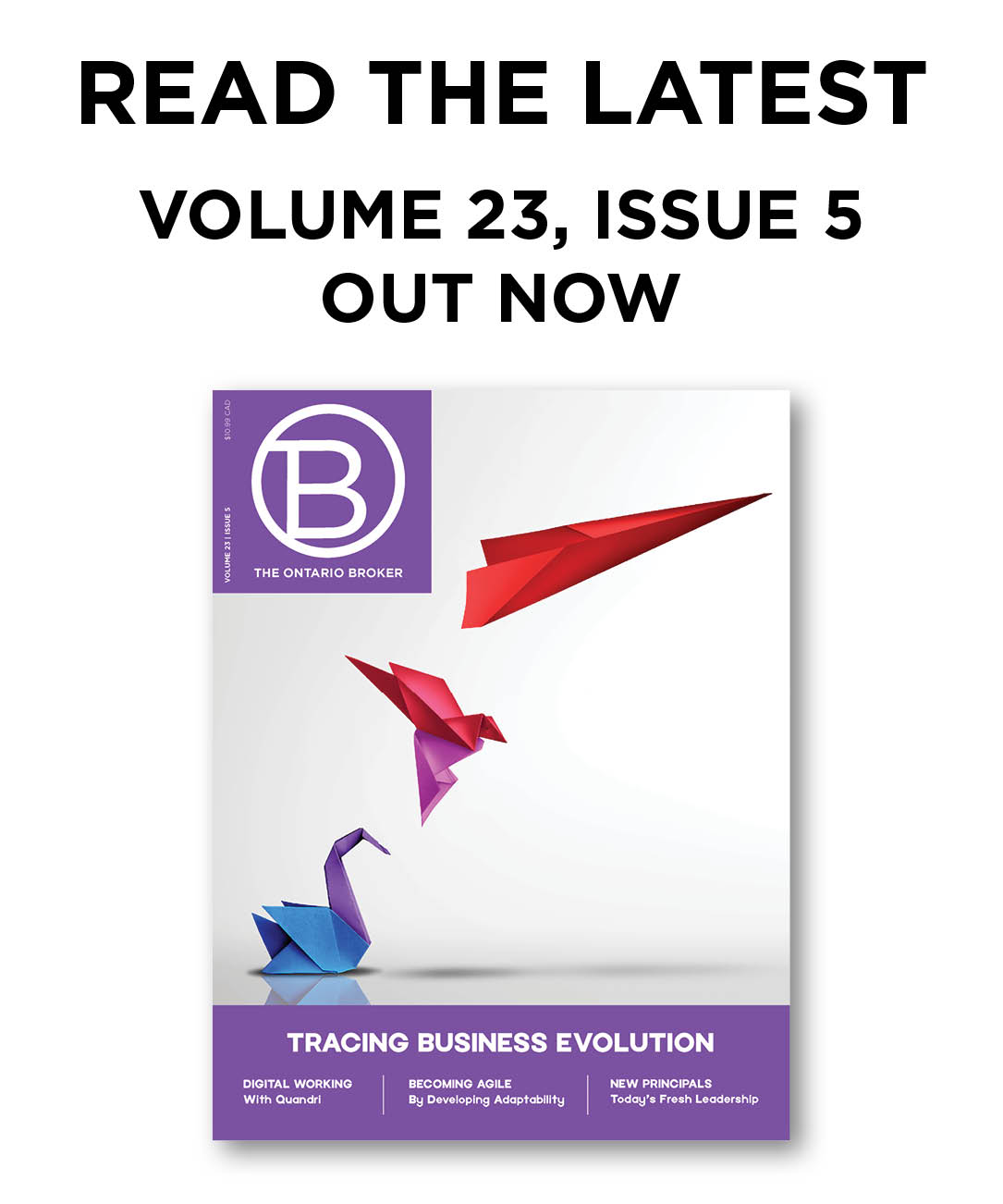

Mark Morissette, CEO of Foxquilt

Lance Miller, CEO of Surex Insurance
What are some interesting tech trends you’ve seen impacting insurance?
MM: Open API connectivity between insurance providers, brokers and enterprises has allowed for the emergence of embedded insurance capabilities for consumers, something that has been lacking in our industry to date.
In addition, consumers are not only looking for a marketplace buying experience but, especially post-pandemic, expect it as table stakes. If brokers can tap into this methodology and provide clear options that easily let them buy, they’ll win every time.
LM: There are a couple of them, but my favourite one is the use of A.I. in lead scoring. I’m excited about this because it really gives the brokerage and the consumer the best opportunity to connect as well as possible. Technology will go a long way throughout the industry, not just at the broker level but even at the company level. Any use of deep learning algorithms is really going to help the industry.
In our industry, there’s a lot of repetitive work, so RPA technology (robotic process, automation) is an interesting trend to keep an eye on. At Surex, we’ve been using it for a little over a year, and there’s just so much opportunity with RPA technology to make brokerages run more efficiently.
How has your company been able to stay innovative over the years?
MM: At Foxquilt, we decided to be a modern, full-stack carrier by investing in technology that truly solved consumer problems. By building an environment that breaks down and understands a business’s risk profile, we can provide better and more affordable commercial insurance products to business owners. With our proprietary IP (the Foxden platform), we are now innovating insurance distribution and affording integrated solutions to B2B partners, brokers and clients. The result is 500 classes across our three products—contractors, personal services, eCommerce—and counting.
In addition, deciding to partner with a large reinsurer, Munich Re., allows us to engineer these innovative products in real-time. We work symbiotically to identify opportunities, create tech solutions and solve problems in our industry. Now that we have successfully distributed products into the market in an omnichannel fashion, we can replicate that model with additional partners and new products to scale distribution.
LM: I always get a little nervous when people dismiss technology. I was reading an article on LinkedIn on how FinTech and InsurTech are dying. It’s not the hot topic that it used to be. I always think standing on the grave of failed companies or failed trials is awful shaky footing. At Surex, we never stand on the graves of a failed attempt or another company to do something. We look at those as opportunities to learn and grow. We never sit back and say we’re leading the industry and in a good place, so we can relax. I don’t think we’ll ever hit that mark.
We live in an age of change where traditional insurance business models are being challenged by new thinking, new competitors, and new challenges—how do you see technology reshaping the insurance industry?
MM: The customer has changed. Customers, especially those who are pioneers and committed enough to start their own businesses, are used to a more digitally-focused purchase experience. They are looking for uniquely streamlined solutions, and want to purchase them where they want and when they have time.
What that doesn’t mean is without advice. Just because you have a digital solution for a customer doesn’t mean that insurance isn’t complex and a customer wouldn’t look for advice. Our Foxquilt broker partners provide the best of both needs—presenting an efficient, buy-online solution while being there to field questions and ensure proper coverage.
LM: This is an interesting question to me because I look at all the consolidation that’s going on in our industry and I scratch my head a little bit—we’re consolidating traditional delivery methods and the traditional way of selling insurance. That’s not the way insurance is going to be sold in years to come. The opportunity for insurance moving forward is looking at the way the customer wants to do business and being in that space instead of trying to force customers into our space. We’re trying to force customers into this model they don’t want to be in anymore. I believe the better use of money and time is to understand customers’ needs and put yourself in the customer’s space rather than trying to pull them into yours.
Technology is redefining the way traditional insurance business is being done—what are some things you see that are imminent for brokerages to implement to stay ahead of these changing times?
MM: It’s important to have solutions that make you more efficient. Beyond investing in the digital tools customers expect—DocuSign, embedded payments or online policy access—partner with carriers that help you do business better.
We spent a lot of time and care researching user experience and designing a purchase experience that more closely resembles the purchase of food through an app or clothes from a retailer. It’s familiar in a way that gives customers comfort and results in a distribution option that lets brokers benefit too.
At Foxquilt, we don’t have business development teams. We have partnership teams. That’s intentional. We work with our broker partners to offer an efficient solution to quoting and binding small businesses. We help them efficiently implement the option. We listen to their feedback on capacity and platform. We work together to help them write more business and be a trusted advisor, so that their human capital can do what they do best—advise those who need advice.
LM: I don’t believe there is only one way of doing business and we all better figure it out or we’re going to become extinct. Brokerages need to get strategic on what they want to accomplish and what their market is. Then they need to design their process around their market. Gone are the days when a brokerage is just going to be able to appeal to the masses.
We know Surex isn’t for everybody, just like a traditional delivery isn’t for everybody. But if we know what our market is, we’re strategic about it and we design our processes and our technologies around the market we’re targeting, then everybody can win on that.
There has been a lot of talkS recently about AI and its impact On the insurance industry. What is your opinion on how AI is transforming the industry?
MM: All innovative technologies are good for the insurance industry. Whether it’s AI, machine learning, embedded APIs, BMS integration or automation—all of these aspects are chipping away at traditional systems to create better broker and consumer experiences.
Reducing question sets, removing the need for manual entry, and running scripts to integrate systems further streamlines processes. This ultimately provides brokers with more choice upfront without the need to search.
LM: There are ways I wish it would influence the industry more and that’s on the underwriting side. We’re still very traditional in our underwriting of actuarial science. And I think there’s a real opportunity for AI to get involved and learn what results in a claim and how we price appropriately. There’s some real use in pricing with AI. On the brokerage side, there’s so much demand on the brokers’ time that it becomes a strong tool as it helps us figure out where we should spend our time.
In online insurance, there are a lot of leads that come in. There are a lot of people looking for insurance, and sometimes there’s more than we can fulfill. AI can segregate leads and identify which ones are most likely to sell and which ones are least likely to claim a lot better than a broker can. For us, AI is good in lead scoring and helping us figure out where we should spend our time. We use AI in our online marketing to provide us insights into who we should target and what apps we should we be putting out there.
Fraud detection is also a huge area where—even at a brokerage level—our data scientists are working on algorithms that can tell if someone’s in our site or if there’s a likelihood of fraud.
There are so many applications where a machine doesn’t have those biases and it can do a far better job than a human can.
Outside of new software solutions, what are some other innovations you’ve seen recently in insurance (anything like new business models or employment policies)?
MM: Letting the customer control their financial service purchase journey has been a big one. We’ve seen it in banking for years, right? They are investing in the tools their customers want and need to help themselves. They invest in functionality consumers don’t know they want/need, and teach them how to use it. In turn, customers now choose a bank, loan provider, or mortgage broker based on their ability to balance self-service with availability and support. Let your customers choose you by giving them the tools to help themselves.
LM: I’m excited by some of the talk I’m hearing at the insurance company level of direct integrations and more APIs. For a brokerage like us, being able to connect more closely with other companies is very important. Not just for us, but for all brokerages—no matter your delivery method, customers come to us to buy insurance. Then when it comes to claims, they get a whole different experience because it transfers to somebody else. As we integrate our systems and workflow more with insurance companies, it’s going to give consumers a more consistent experience.





